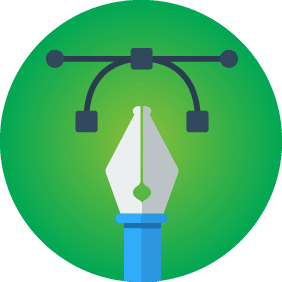The designing stage is the first and most important stage of a web design project. Web designing is not an easy task; lots of effort, time and ideas go behind designing an attractive and intuitive website. A web designer is required to keep in mind the target audience and the brand image while designing the site.
It is, therefore, very important for the marketing and designing teams to be on the same page while designing the website. This collaboration also helps designers craft a website that aligns with a business’s strategic growth plan.
Web designers need to break up the design process into a series of phases to ensure they are able to create a website that meets precise client needs and requirements.
So, here are the important phases of a web design project:
- Requirement Gathering and Brainstorming Ideas
The very first step in designing an effective website is to gather requirements and analyze these requirements based on company goals, target audience and other requirements of the client. It is important for web designers to collect as much relevant information as possible.
After gathering requirements, the next step is to sketch out some creative ideas for the project. This is the most important step because if you get this right, it can save you a lot of time and effort for all the other phases. A web designer must craft a few rough designs and then send them to the client for feedback.
- Creating a Workflow
After getting feedback from the client and accordingly tweaking the ideas, it’s time to use pen and paper to sketch the layout of your final idea and creating a design workflow. This includes designing the structure of the site and providing brief information on what type of content will be included on various web pages of the site.
This phase will give you a brief idea of the time you would require to develop the project.
Get the approval from the client for your workflow before you move to the next phase.
- Creating Low-Fidelity Wireframes
According to wiki:
“A website wireframe, also known as a page schematic or screen blueprint, is a visual guide that represents the skeletal framework of a website.”
(“Profilewireframe” by http://www.flickr.com/people/doos/ – http://www.flickr.com/photos/doos/3931846833/. Licensed under CC BY 2.0 via Wikimedia Commons.)
These wireframes mainly focus on the placement of various design elements on the web page. They also provide information on the location of several features like social login buttons, email newsletter sign-up, links to different sections of the site, etc. These wireframes are presented as a rough sketch that does not include any information about typography, color or graphics the site will incorporate.
As this is a rough draft, it is easier to make changes then with high-fidelity wireframes.
- Creating High-Fidelity Wireframes
Low-fidelity wireframes are basically used to explain the functions of the site. However, they do not provide the structure of the various forms that would be included in the site. These and many more such missing details are described in high-fidelity wireframes.
High-fidelity wireframes provide information about features, functionality and detailed specifications of each design element. They even determine the position and amount of space for the content that deserves most attention. They are to an extent the exact resemblance of the final website.
Web designers can use tools to wireframe in high-fidelity easily and fast.
- Developing Graphic Mockups
Once the visual design for high-fidelity wireframe receives a green signal from the client, it is time to develop visual mockups! Mockups give the visual representation of the planned design of the site.
Mockups are a prototype of the site that clearly demonstrates color, font-sizes, font-type and precise placement of all the navigation and content elements on the site. This is the best way to show the client what the finished website will look like.
There are various types of mockup tools available that help designers easily develop a mock web layout that represents the layout, design and functionality of the site clearly.
These steps will help you design a website that is strategically focused to attract, engage and convert visitors.
May 20, 2015










